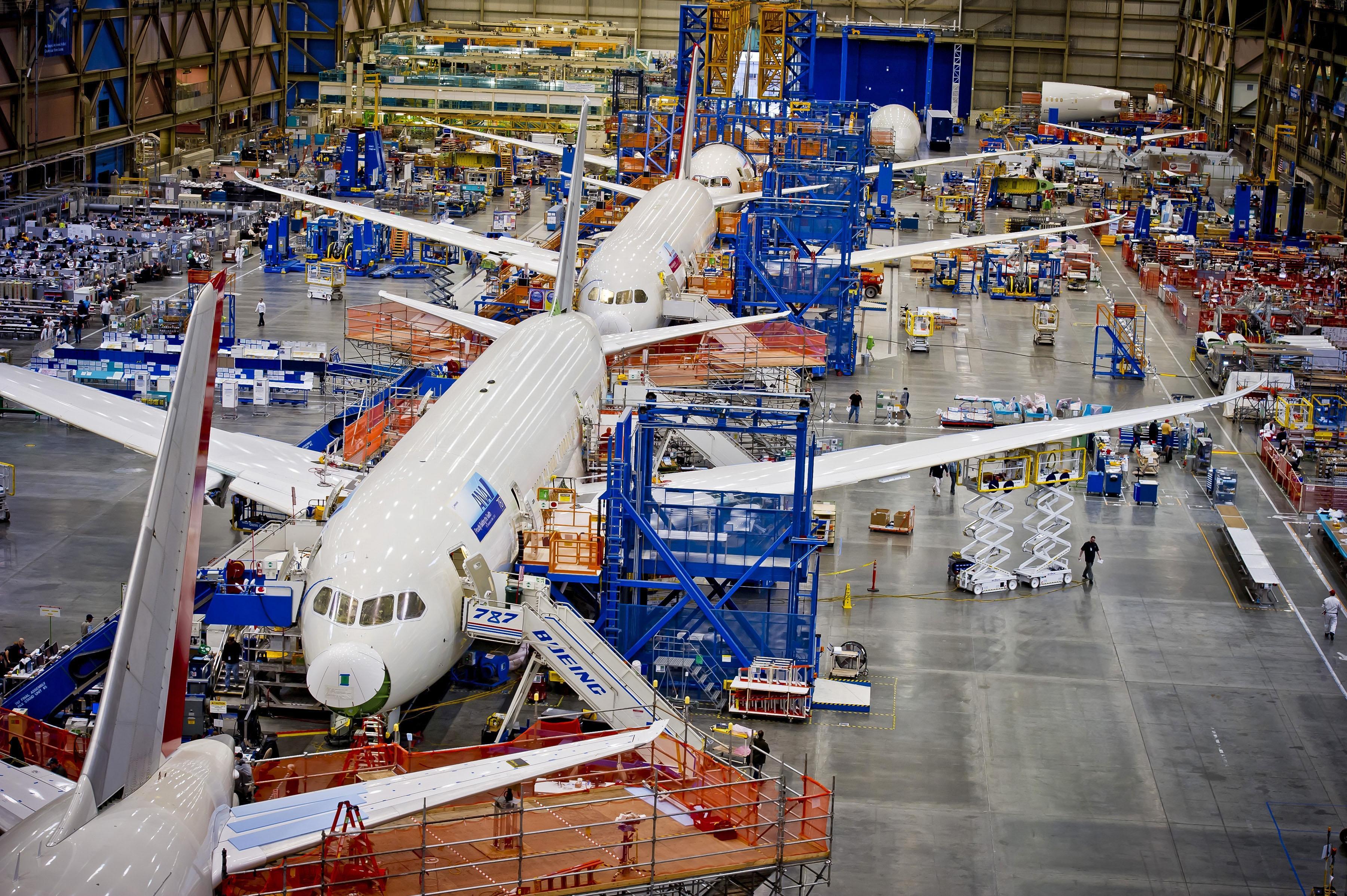
Facing another heavy quarterly loss of $2.4 billion, the COVID-19-triggered market downturn, and continued uncertainty over the timing of the return-to-service of the 737 MAX, Boeing is making further cutbacks to its commercial aircraft production rates, studying additional layoffs and delaying deliveries of the 777X until 2022.
Announcing new steps in its aggressive retrenchment plan as part of the company’s 2020 second-quarter results, Boeing also confirmed production of the 747 will end in 2022 and said it is evaluating whether to consolidate in one location its two 787 production facilities in Everett, Washington and Charleston, South Carolina.
The company’s priority remains fixed on returning the 737 to service, but with 450 aircraft already built and in storage awaiting delivery, Boeing is slowing plans to ramp up production to 31 per month from 2021 to early 2022 amid on-going market softness and the prolonged process of recertification. Boeing now believes deliveries will restart in the fourth quarter of 2020 pending clearance of the MAX, which was grounded in March 2019 after two fatal accidents.
“The production ramp profile is also affected by the pace of delivery of our stored aircraft,” Boeing CEO Dave Calhoun said, adding the company expects the majority of the built inventory to be delivered during 2021. In the meantime, Boeing cautions that the actual timing and size of the rate ramp between now and 2022 will be impacted by negotiations with airlines over the delivery schedule and sequencing of both stored and yet-to-be-completed.
“Stability is going to be job one,” Boeing CFO Greg Smith said. “It’s ensuring that we move up methodically and stabilized—not have travel work—and [have] first time quality. We’ll do an assessment, then we’ll move up to the next rate. And then again, we’ll be informed of how quickly we’re clear in the inventory off the ramp.”
Production of Boeing’s two biggest money earners, the 777 and 787, will also be drastically cut back under the revised plans. Boeing previously planned to reduce 787 production to 10 per month in 2020 and gradually trim it further back to seven per month by 2022. But Calhoun said, “in light of the ongoing challenges presented by the pandemic and the impact on our airline customers we now plan to reduce the 787 production rate from the current 10 per month to six per month in 2021.”
Reducing overall production to low single digits has also triggered a feasibility study into consolidating production into one site. Boeing splits 787 production between Everett and Charleston but assembles the largest 787-10 variant exclusively at the east coast site due to the length of the mid-body fuselage section, which is also fabricated locally in South Carolina. Although this logically suggests Boeing might shift all 787 production, at least temporarily, to Charleston, while mothballing the line at Everett, Calhoun declined to speculate on the outcome of the study.
“I’m not going to jump to that conclusion yet,” Calhoun said. “I want to make sure we do this the right way. So, we’re in process and we’re going to do the best we can.” However, he added, “I’m not even sure we can pull it off, but at any rate we are going to evaluate it.”
The reductions on the 777 will see the combined 777-300ER/777F and 777X production rate slimmed to just two aircraft per month in 2021 versus the company’s original plan of three per month. Deliveries of 777s will continue at an average rate of around 2.5 per month through the rest of this year. But beyond this Calhoun said the adjusted production rate plans reflect the impacts of the pandemic on the widebody market and the decision to slide initial deliveries of the 777-9, the first of the 777X family, from 2021 to 2022.
The slowdown in 777-9 development, in turn, is caused by the COVID-19 related slowdown in market demand for the big new twin, as well as an extended certification process that reflects lessons learned from the revised certification of the 737 MAX. “We’ve tried to incorporate, or embed, as much of what we’ve learned in the 737 recertification as we can into that of the 777X, which means it just elongates that [process] a bit,” Calhoun said. “Certain things are going to take more time to work our way through with the FAA. They’re going to go deeper than maybe they would have, or we would have assumed in earlier certification processes.”
Confirming plans to end production of the 747-8 in 2022, Calhoun said the assembly rate for the freighter will remain at six per year until the termination of the five-decades long program. Although widely anticipated, Boeing’s plan to end manufacture of the storied 747 appears to have been accelerated by several months from a previously targeted end goal of 2023. The 767 line, bolstered by the KC-46 military derivative, meanwhile remains unaffected for now with production maintained at three per month for the foreseeable future.
The company’s commercial delivery tally for the second quarter also reflects the continuing impact of both the pandemic and the 737 grounding with just 20 aircraft of all models turned over to operators, compared to 90 for the same period in 2019. The 787 made up the bulk of the total with seven deliveries, compared to four each for the 767, 777 and 737—the latter comprising military derivatives. The quarter also included a single 747-8 delivery. Total deliveries for the year-to-date number 70 aircraft compared to 239 for the first six months of 2019.
Calhoun also warned of possible further job losses to come, particularly in the commercial sector. Around 19,000 employees are leaving, of which around 6,000 had left by the end of June. “It’s 15% of our commercial businesses, which is where these adjustments have to get made. We’re not yet through those,” he said. “These gradual rate downs that we’ve announced today will also take a toll on future employment.”






Comments